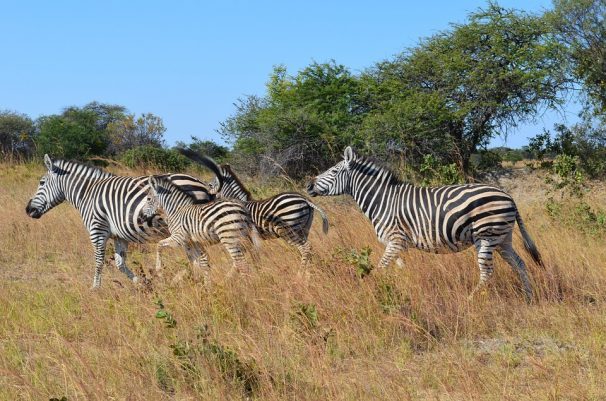Zebras, specifically odours found in their skin, may provide leads to boost the management of the deadly and devastating African trypanosomosis disease, which is transmitted by tsetse flies to people and livestock.
These findings are reported in a study by researchers from the International Centre of Insect Physiology and Ecology (icipe), and University of Pretoria, South Africa, published recently in PLOS Neglected Tropical Diseases journal.
Found only in Africa, tsetse flies and the diseases they transmit are one of the major constraints to livestock and agricultural production, land use, nutrition, incomes, and overall development in Africa. Control of the flies with synthetic insecticides is expensive and harmful to people, livestock and the environment.
“Previous research has shown that tsetse flies avoid, and hardly bite zebras, even though zebras are commonly present in areas infested by the flies. Until now, the reason for this evasion has been unclear, with speculations that the zebras’ striped skin is a contributing factor. However, the zebra stripes are only visible to tsetse flies at about 5–10 metres. Beyond this distance, zebras appear uniformly grey to the flies,” explains Olabimpe Olaide, a Nigerian scholar who conducted the study as part of her PhD research at icipe, registered at the University of Pretoria.
“Our study established that zebras produce certain scents that repel tsetse flies. We also found that a blend of three of these odours enhances the effectiveness of existing tsetse management tools, including the icipe tsetse repellent collar technology and NGU traps,” notes Olabimpe.
The Ngu trap is built on visual (shape and colour) and smell-based cues (for example, cow urine and acetone, that attract tsetse flies). The highly successful tsetse repellent collar technology exploits chemical signals obtained from the waterbuck, an animal that has also been found to repel tsetse flies. A blend of these chemicals has been packaged in innovative dispensers which, when worn as collars around the neck of cattle, essentially make cattle unattractive to tsetse flies.
“In comparison to the waterbuck repellent, the chemical blend identified from zebras appears to offer a comparable, longer lasting and more affordable alternative, although this potential requires further research,” says Baldwyn Torto, Head of icipe Behavioural and Chemical Ecology Unit, and co-supervisor and mentor of Ms. Olaide.
The researchers do not rule out the possibility of the zebra stripes as a factor in driving away tsetse flies. Therefore, future studies will explore this likelihood, as well as other visual and odour cues from zebra breath, urine and dung, towards creating an integrated novel strategy to manage tsetse flies.
From a broader perspective, the icipe-led study strengthens the case for the conservation of Africa’s wildlife. The value of this rich heritage to the continent – for example its critical role in tourism – is already well established. But these findings add another dimension; the indispensable function of wildlife in ecosystems, and the amazing possibilities they harbour for the survival of human beings.








